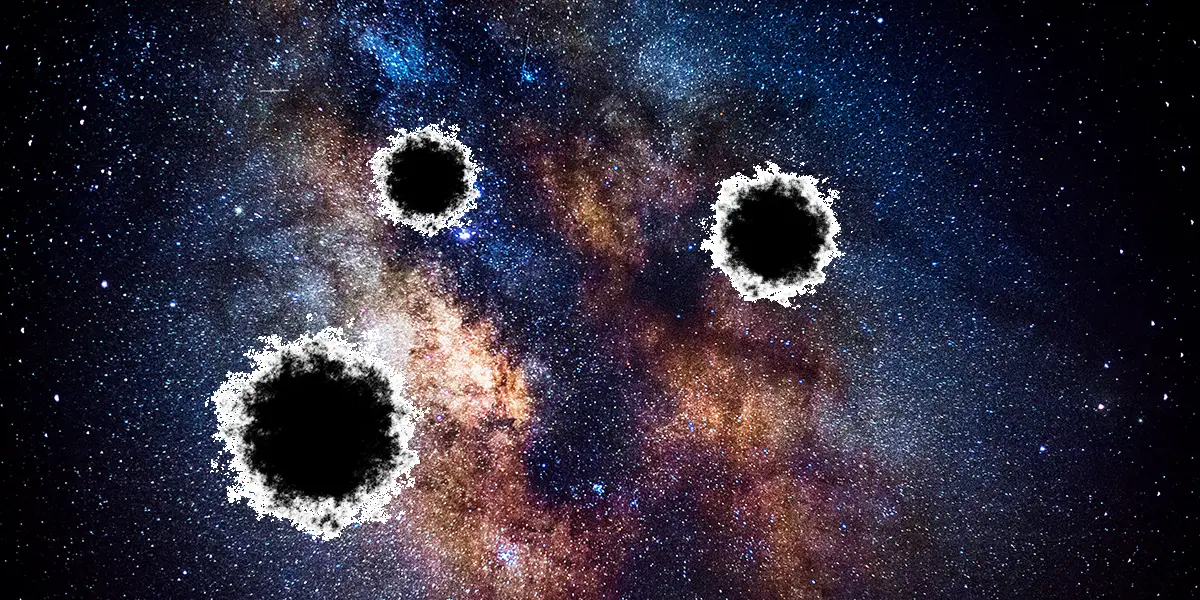Something Is Blasting Holes Into The Milky Way Galaxy, But Scientists Don’t Know What
Tags: News

By Mandy Froelich / Truth Theory
While the world was distracted by the latest celebrity gossip and US political scandal, a researcher at the Harvard-Smithsonian Center for Astrophysics made a newsworthy discovery. Reportedly, there is a “dark impactor” blasting holes in the Milky Way galaxy. Though telescopes have not yet detected the source, which may not be made of normal matter, it certainly seems there is something out there.
“It’s a dense bullet of something,” said Ana Bonaca, a researcher who discovered evidence for the impactor. On April 15, she presented her findings at the conference of the American Physical Society in Denver. Because Bonaca’s discovery is so new, it hasn’t yet been published in a peer-reviewed journal. It has, however, been met with appreciation by the group of physicists at the conference.
Bonaca says there is a series of holes in our galaxy’s longest stellar stream, GD-1. As LiveScience reports, stellar streams are lines of stars moving together across galaxies. They often originate in smaller blobs of stars that collided with the galaxy in question. The stars in GD-1 are remnants of a “globular cluster” that made an impact with the Milky Way a long time ago. Now, they are stretched out in a long line across the sky.
“We can’t map [the impactor] to any luminous object that we have observed,” Bonaca said. “It’s much more massive than a star… Something like a million times the mass of the sun. So there are just no stars of that mass. We can rule that out. And if it were a black hole, it would be a supermassive black hole of the kind we find at the center of our own galaxy.”
There could be second supermassive black hole in our galaxy. However, if this were the case, Bonaca theorizes that if this were the case researchers would have noticed some sign of it, such as flares or radiation. Furthermore, other galaxies like the Milky Way seem to have just a single supermassive black hole at their center.
Bonaca’s best guess is that the source of the holes is a big clump of dark matter. She explained that this doesn’t mean the object is 100% absolutely made of dark matter. “It could be that it’s a luminous object that went away somewhere, and it’s hiding somewhere in the galaxy,” said the researcher. This is unlikely, though, mainly due to the scale of the object.
“We know that it’s 10 to 20 parsecs [30 to 65 light-years] across,” said Bonaca. “About the size of a globular cluster.”
For many scientists, the possibility of having found a real dark matter object is astounding. This is because we still don’t really know what dark matter is. Many questions, such as “what holds galaxies together?” have yet to be answered.
For the research, Bonaca relied on data from the Gaia mission, a European Space Agency program, to map the billions of stars in our galaxy. It has the best existing catalog of the stars that seem to be part of GD-1. She then cross-referenced the data with observations from the Multi-Mirror Telescope in Arizona.
Bonaca learned which stars were moving toward Earth, and which ones were moving away. Her efforts produced the most precise image ever of GD-1. It reveals the second gap, the spur, and the previously unseen region of the stellar stream. In the future, Bonaca hopes to do more mapping projects to reveal the regions of the galaxy where something unseen appears to be knocking stars around. Eventually, she wants to map clumps of dark matter all across the Milky Way.
What are your thoughts? Please comment below and share this news!

Leave Comment: